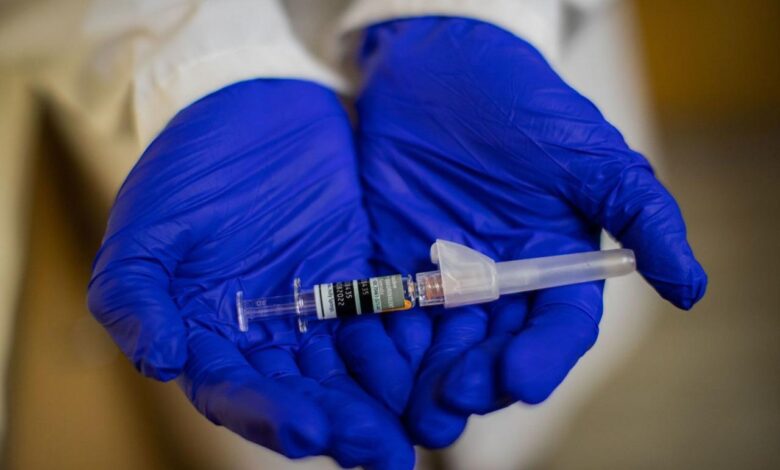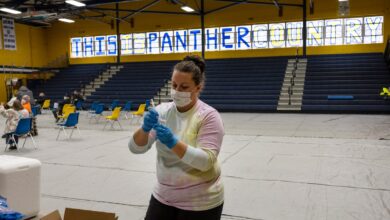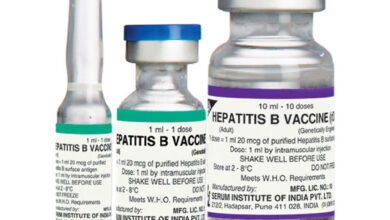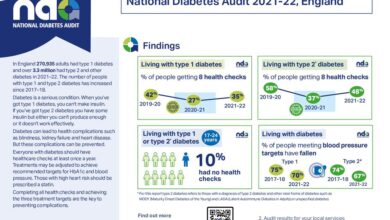
The flu vaccine might be mismatched but you still need your shot. This isn’t a reason to skip your annual flu jab. Understanding why a mismatch happens, and how it impacts your health, is key to making an informed decision. While a perfectly matched vaccine is ideal, the science behind flu vaccine development and adaptation to ever-changing strains is fascinating.
This blog post will delve into the details, addressing your concerns and highlighting the vital role vaccination plays in protecting yourself and your community, even with a mismatch.
Flu vaccines are developed in advance of the flu season. Scientists predict the strains likely to circulate, and create vaccines to match. However, sometimes the predicted strains don’t fully match the actual strains. Factors such as the rapid evolution of the influenza virus, and the time needed for vaccine development, contribute to this mismatch. This blog post delves into the process, explaining how vaccine manufacturers adapt, and why even a mismatched vaccine is important.
Understanding the Flu Vaccine Mismatch
The flu vaccine, a crucial tool in preventing seasonal influenza, is constantly adapting to the ever-evolving nature of the influenza virus. Sometimes, the vaccine’s formulation doesn’t perfectly match the circulating strains of the virus. This phenomenon, known as a vaccine mismatch, can impact the vaccine’s effectiveness. Understanding the science behind these mismatches is key to appreciating the complexities of influenza prevention.A flu vaccine mismatch occurs when the strains of influenza virus included in the vaccine formulation do not closely resemble the strains circulating in the human population during the influenza season.
This discrepancy can lead to reduced effectiveness of the vaccine in preventing illness. The mismatch isn’t a sign of vaccine failure, but rather a reflection of the virus’s inherent ability to mutate and evolve.
Factors Contributing to Vaccine Mismatch
Influenza viruses are constantly evolving, primarily through a process called antigenic drift. This involves gradual changes in the virus’s surface proteins, hemagglutinin (HA) and neuraminidase (NA). These changes are small but can alter the virus’s ability to bind to human cells and evade the immune response developed from previous exposure or vaccination. Other factors influencing mismatch include:
- Antigenic drift: The gradual changes in the virus’s surface proteins, hemagglutinin (HA) and neuraminidase (NA), make it harder for the immune system to recognize and fight the virus. These changes are small but can accumulate over time, leading to the need for adjustments in the vaccine formulation.
- Antigenic shift: This is a more dramatic change, often involving the reassortment of genes between different influenza viruses. This can lead to entirely new strains that the immune system has never encountered before, making it difficult for the vaccine to provide protection.
- Global influenza surveillance: The effectiveness of the vaccine is highly dependent on the accuracy of global surveillance efforts to identify the dominant influenza strains circulating in different regions. The more effectively influenza strains are monitored, the more precise the vaccine’s composition can be.
Scientific Process of Flu Vaccine Development
Developing an effective flu vaccine involves a multi-stage process. Firstly, global surveillance systems monitor influenza viruses worldwide to identify the most prevalent strains. These data are crucial for selecting the strains to include in the vaccine formulation. Once the selected strains are identified, they are grown in the laboratory. Then, the viruses are inactivated or weakened, and these inactivated or weakened viruses are used to produce the vaccine.
The process is continually refined to address the evolving nature of the virus.
Impact of Mismatch on Vaccine Effectiveness
A mismatch between the vaccine and the circulating influenza strains can lead to a decrease in vaccine effectiveness. This means the vaccine may not protect as many people against influenza illness as expected. The degree of reduction in effectiveness varies depending on the extent of the mismatch. Some individuals may still develop a milder form of influenza or experience only minor symptoms.
Vaccine Manufacturer Adaptation
Vaccine manufacturers use sophisticated techniques to adapt to changing influenza strains. This involves:
- Utilizing global surveillance data: Vaccine manufacturers rely on global influenza surveillance data to identify circulating strains. The more comprehensive and timely this data is, the better the vaccine can be tailored to the specific needs of a season.
- Developing new formulations: Vaccine manufacturers work to create new formulations to match the most prevalent strains, often making adjustments from one season to the next.
- Improving prediction models: Ongoing research aims to refine prediction models for influenza strains, providing more accurate estimations of which strains will dominate the upcoming season.
Assessing the Need for Vaccination Despite Mismatch

Getting a flu shot, even when the vaccine doesn’t perfectly match the circulating strains, remains a crucial step in protecting yourself and your community. The effectiveness of the vaccine may be slightly diminished, but its overall benefit still significantly outweighs the risks. Understanding the factors influencing this decision is key to making informed choices about your health.While a perfect match between the vaccine and circulating strains is ideal, a mismatch doesn’t negate the vaccine’s value.
The vaccine still stimulates your immune system to produce antibodies that can help fight off influenza viruses, even if the strains aren’t precisely identical to those circulating. This response is a crucial aspect of the overall protection provided.
Importance of Vaccination Despite Mismatch
Vaccination, even with a mismatch, remains vital for individual and community health. The benefits far surpass the potential drawbacks. It helps reduce the severity of illness and prevents complications, including hospitalization and death.
Benefits of Vaccination Compared to Risks of Not Getting Vaccinated
Vaccination offers a significant reduction in the likelihood of contracting influenza, even if the circulating strains differ from those in the vaccine. The potential benefits include avoiding serious illness, reducing the risk of hospitalization, and decreasing the chance of spreading the virus to vulnerable populations. Conversely, not getting vaccinated significantly increases the risk of contracting the flu, potentially leading to severe complications, hospitalization, or even death.
This risk is particularly high for those with underlying health conditions.
Okay, so the flu vaccine might not be a perfect match this year, but you still absolutely need that shot. While we’re thinking about boosting our immune systems, it got me wondering about the nutritional benefits of certain fruits. For example, are peaches good for you? Turns out, they’re packed with vitamins and antioxidants, which is a great way to support your overall health and well-being.
are peaches good for you But let’s get back to the flu shot – even if the vaccine isn’t a perfect fit, it still offers significant protection against the flu, which is a serious illness. So, get your shot and keep your health in top shape!
Role of Vaccination in Community Immunity
Vaccination contributes significantly to community immunity, or herd immunity. When a large portion of the population is vaccinated, it creates a protective barrier against the spread of the virus. This protection benefits not only vaccinated individuals but also those who cannot be vaccinated due to medical reasons, such as infants or immunocompromised individuals.
Vulnerable Populations Needing Vaccination Most
Certain populations are at higher risk of severe flu complications and should prioritize vaccination, even with a mismatch. These include the elderly, young children, pregnant women, and individuals with chronic health conditions such as asthma, diabetes, or heart disease. Their immune systems might not respond as effectively to the virus, making them more susceptible to severe illness.
Types of Flu Vaccines and Mismatch Impact
Different types of flu vaccines exist, each with a varying degree of impact from mismatch. Inactivated influenza vaccines (IIVs), which are the most common type, generally still offer substantial protection, even if there is a mismatch. However, the effectiveness may differ based on the specific strains circulating and the vaccine formulation. Live attenuated influenza vaccines (LAIVs) are less common and may have a slightly different impact depending on the mismatch.
It is crucial to consult with a healthcare professional to understand the specific implications of a mismatch for the type of vaccine chosen.
Communicating Vaccine Information to the Public
The flu vaccine is a crucial tool in protecting public health, and clear communication about its potential complexities is vital. Mismatches in the vaccine strain predictions can occur, but this doesn’t diminish the importance of vaccination. Understanding how these situations arise and how the information is conveyed to the public can significantly influence vaccine uptake. Open and honest communication fosters trust and encourages informed decisions.This section will explore strategies for communicating vaccine mismatch information to the public, addressing concerns, and building trust in the vaccination process.
We’ll also look at examples of clear and concise language and a simple infographic to illustrate the process.
Explaining Vaccine Mismatch to the Public
Communicating vaccine mismatch requires clear, concise language that avoids technical jargon. Instead of complex scientific details, focus on the overall concept of predictions and adjustments. For example, instead of saying “the virus strain predicted for the upcoming flu season did not fully align with the actual circulating strains,” explain that “scientists anticipated a specific type of flu virus, but a different type became more prevalent.” This simplified language allows the public to grasp the concept without being overwhelmed by details.
Furthermore, emphasizing the ongoing research and adaptation in vaccine development helps build public understanding.
Addressing Public Concerns
Public concerns about a mismatched vaccine often stem from a fear of ineffective protection. It’s crucial to address these concerns proactively. Highlight the fact that even with a mismatch, the vaccine still offers significant protection against various strains. Emphasize the vaccine’s ability to protect against similar viruses, reducing the severity of illness, and thus preventing hospitalizations and deaths.
Using real-life examples of flu seasons with different circulating strains and the vaccine’s effectiveness in those cases can provide reassurance. Explain that scientists are constantly monitoring the circulating viruses and updating their predictions for future seasons. Highlight the robustness of the process, even with adjustments.
Building Trust in the Vaccination Process
Building public trust in the vaccination process involves transparency and open communication. This means sharing information about the vaccine development process, including the limitations and potential for adjustments. Clearly explaining the scientific basis behind vaccine development, highlighting the rigorous testing procedures, and showcasing the continuous improvement in accuracy are important steps. Transparency about the ongoing monitoring of circulating viruses and the adjustments made to vaccine composition can demonstrate the dynamic nature of the process.
Involving community health workers and trusted figures in the communication process can help build trust at the local level.
Infographic: Flu Vaccine Development and Potential Mismatch
This infographic illustrates the process of flu vaccine development and the potential for mismatch. The infographic uses a simplified flowchart with boxes representing key steps. A box labeled “Virus Prediction” would highlight the process of scientists analyzing past flu seasons and predicting the dominant strains. A box labeled “Vaccine Production” would show the creation of the vaccine based on the predicted strain.
A box labeled “Monitoring” would show how scientists continuously monitor circulating strains and update predictions as needed. An arrow connecting “Monitoring” to “Vaccine Production” would represent the adjustments made to the vaccine composition. The infographic would also visually represent the fact that even with a mismatch, the vaccine still offers some protection against circulating strains.
Frequently Asked Questions (FAQ)
| Question | Answer |
|---|---|
| What causes a mismatch in the flu vaccine? | Flu viruses constantly evolve, and scientists’ predictions are based on past patterns. Changes in the viruses’ composition can lead to mismatches between the predicted and actual circulating strains. |
| Does a mismatch mean the vaccine is useless? | No, even with a mismatch, the vaccine offers significant protection against various strains of the flu, reducing the severity of illness and preventing hospitalizations and deaths. |
| How do scientists predict the flu strain? | Scientists analyze past flu seasons, tracking the dominant strains, and using sophisticated modeling to predict the strains likely to circulate in the upcoming season. |
| What happens if the predicted strain is significantly different? | Scientists monitor the circulating viruses and adjust the vaccine composition as needed to better target the circulating strains. |
| How does the vaccine protect against different strains? | The vaccine protects against similar strains of the flu. While not completely identical, the protection offered still reduces the severity of illness. |
Potential Impacts of a Mismatched Flu Vaccine
A mismatched flu vaccine, while still offering some protection, can vary significantly in its effectiveness compared to a well-matched vaccine. Understanding these potential impacts is crucial for making informed decisions about vaccination, especially in light of the ongoing evolution of influenza viruses. This knowledge empowers individuals to weigh the risks and benefits of vaccination and to continue their efforts in preventative health.The effectiveness of a flu vaccine hinges on its ability to match the circulating strains of influenza.
A mismatched vaccine, while not entirely useless, might not provide the same level of protection as a well-matched one. This difference in effectiveness stems from the vaccine’s composition and its ability to stimulate the immune system to recognize and combat the actual circulating strains. Consequently, the impact on symptom severity, spread, and overall protection varies.
Effectiveness Comparison of Matched and Mismatched Vaccines
A well-matched flu vaccine, formulated to closely mirror the circulating strains, typically provides higher levels of protection. This is because the vaccine-induced antibodies more effectively target the dominant influenza strains. Conversely, a mismatched vaccine, while still offering some degree of immunity, is less effective. The immune response may be less robust against the circulating strains, and the vaccine may not offer broad protection against different strains.
| Characteristic | Well-Matched Vaccine | Mismatched Vaccine |
|---|---|---|
| Protection against dominant strains | High | Lower |
| Protection against other strains | Moderate | Low |
| Severity of illness | Reduced | Potentially increased (in some cases) |
| Spread of influenza | Reduced | Potentially reduced, but less than with a well-matched vaccine |
Impact on Flu Symptom Severity
A mismatched vaccine may not prevent illness entirely, and in some cases, it might actually lead to a slightly more severe course of illness. This occurs when the circulating strain differs significantly from the vaccine strain. The immune response triggered by the vaccine might not be fully effective against the circulating strain, and thus individuals might experience more severe symptoms, such as fever, cough, and body aches.
However, it’s important to note that vaccination still provides some level of protection even with a mismatch, reducing the risk of serious complications.
Impact on Influenza Spread, The flu vaccine might be mismatched but you still need your shot
Vaccination, even with a mismatch, can still contribute to reducing the spread of influenza. A vaccinated individual is less likely to transmit the virus, either because they experience a milder illness or because the vaccine reduces viral shedding. Although a mismatched vaccine may not be as effective as a well-matched vaccine in preventing transmission, it still plays a role in controlling the spread of influenza, particularly by reducing the number of severe cases.
Okay, so the flu vaccine might not be a perfect match this year, but you still absolutely need to get your shot. It’s a bit like the annual interview with Justin Baldoni, interview with justin baldoni – sometimes the questions are a little off, but the key takeaways and personal growth are still valuable. Even if the virus isn’t perfectly mirrored, the vaccine will still build your body’s defenses and help keep you healthy.
So, go get your shot!
Accessing Accurate Vaccine Information
Staying informed about the flu vaccine and its effectiveness is essential for making the best decisions. Reliable sources of information include:
- Public health agencies (e.g., the Centers for Disease Control and Prevention (CDC) in the United States or similar agencies in other countries): These agencies provide regular updates on the circulating influenza strains and vaccine recommendations.
- Healthcare providers: Doctors and other healthcare professionals can provide personalized advice based on individual needs and circumstances. They can also address concerns and answer questions.
- Reputable news sources: Reputable news organizations, when reporting on influenza and vaccination, typically cite credible sources to provide accurate and detailed information.
Importance of Vaccination Despite Mismatches
Despite potential mismatches, vaccination remains an important public health measure. Even a mismatched vaccine can offer significant benefits by reducing the severity of illness, the duration of illness, and the risk of complications. The overall impact of vaccination, even in cases of mismatch, is substantial in reducing the burden of influenza on healthcare systems and individuals. The decision to vaccinate should not be based solely on the potential for a mismatch, but rather on the overall benefits of vaccination against the flu.
Addressing Public Concerns
Navigating the complexities of a potentially mismatched flu vaccine can raise understandable concerns among the public. Public trust in the efficacy and safety of vaccines is paramount, and any perceived discrepancy can lead to hesitancy. Understanding these concerns and the scientific basis for addressing them is crucial for promoting vaccine uptake and public health.
Common Public Concerns Regarding Flu Vaccine Mismatches
The public may harbor concerns about the accuracy of the vaccine’s match to the circulating strains of influenza viruses. They may question the overall effectiveness of the vaccine if the match is not precise. Further, there might be anxiety regarding the potential for adverse reactions, or a perceived lack of protection if the vaccine does not precisely target the prevailing strains.
Scientific Rationale Behind Public Concerns
The effectiveness of the flu vaccine hinges on its ability to match the prevalent strains of influenza viruses in a given season. When the vaccine’s composition does not closely align with the circulating viruses, the protection it offers may be diminished. The seasonal nature of influenza viruses, constantly evolving through genetic mutations, makes perfect matching difficult. This explains the ongoing research and development efforts to improve vaccine prediction accuracy.
How Health Professionals Address Public Concerns
Health professionals address these concerns by emphasizing the overall benefit of vaccination, even with a mismatch. They highlight the fact that a mismatched vaccine can still provide some protection against influenza, reducing the severity of illness and the likelihood of hospitalization. Furthermore, they explain that vaccination reduces the burden on healthcare systems by decreasing the number of individuals requiring medical attention.
A mismatched vaccine, though less effective in preventing infection, can still reduce the severity of the illness.
Detailed Explanation of How a Mismatched Vaccine May Affect Different Demographics
The impact of a mismatched vaccine on different demographics is multifaceted. Elderly individuals, young children, and those with underlying health conditions often experience more severe influenza outcomes. In these populations, even a less effective vaccine can provide important protection, reducing the risk of complications and hospitalizations. For example, a mismatched vaccine can still prevent severe cases of influenza in the elderly, a crucial factor in their overall health and well-being.
So, the flu vaccine might be a bit off this year, but you still absolutely need that shot! It’s all about your immune system getting a head start, and while new parents are often struggling with sleep deprivation (check out this fascinating new parent sleep study to see the impact!), a strong immune system is crucial for everyone.
Getting the vaccine, even if it’s not a perfect match, is still your best bet against a nasty flu season.
Table Outlining the Pros and Cons of Flu Vaccination (Even with a Mismatch)
| Factor | Pros | Cons |
|---|---|---|
| Protection Against Illness | Reduces the likelihood of getting the flu, potentially decreasing the severity of symptoms. | Protection may be lower than with a perfect match. |
| Reduced Hospitalizations | Reduces the risk of hospitalization, especially for vulnerable populations. | Reduced protection may lead to a higher risk of hospitalization in some cases. |
| Reduced Transmission | Reduces the spread of influenza to others, mitigating the overall burden of the disease. | Reduced transmission may not be as significant as with a well-matched vaccine. |
| Economic Impact | Reduces the financial burden of influenza-related healthcare costs. | In cases of a significant mismatch, the economic benefit may be less pronounced. |
| Reduced Burden on Healthcare System | Decreases the strain on healthcare resources by reducing the number of influenza cases. | A significant mismatch could still place a strain on resources, but potentially to a lesser extent. |
Alternative Strategies (if any): The Flu Vaccine Might Be Mismatched But You Still Need Your Shot

A mismatched flu vaccine can significantly impact public health, necessitating alternative strategies to mitigate its effects. These strategies must encompass improvements in vaccine development, early detection, and public health responses. This approach acknowledges the limitations of current methods and seeks proactive measures to enhance the efficacy and effectiveness of influenza vaccination programs.
Improving Vaccine Development Accuracy
The accuracy of flu vaccine development hinges on anticipating the dominant influenza strains circulating in the upcoming season. This involves sophisticated surveillance systems that analyze viral genetic sequences and predict the most prevalent strains. Improved forecasting models can incorporate various data points, including past influenza outbreaks, geographic patterns, and even animal influenza strains.
- Advanced Computational Modeling: Sophisticated algorithms can analyze massive datasets of influenza genetic information, predicting the most likely strains to emerge. For example, researchers could use machine learning models to predict the prevalence of specific mutations in the influenza virus, allowing for the development of vaccines tailored to these anticipated changes.
- Expanded Surveillance Networks: Global collaboration and enhanced surveillance networks are critical. These networks would collect data on circulating influenza viruses from various geographical locations, providing a comprehensive view of viral evolution and the emergence of new strains. This data can be used to fine-tune vaccine predictions.
- Multi-strain Vaccine Development: Scientists are exploring the development of multi-strain vaccines that can protect against multiple circulating influenza viruses. This approach, if successful, could offer broader protection and minimize the impact of mismatches. For instance, the current quadrivalent vaccine protects against four different influenza strains.
Early Detection and Response to Emerging Influenza Strains
Rapid detection of emerging influenza strains is crucial for timely adjustments in vaccination strategies. This involves strengthening surveillance systems, promoting rapid diagnostic testing, and implementing effective communication channels.
- Enhanced Surveillance Systems: Real-time monitoring of influenza activity is vital. Advanced surveillance systems should collect data on circulating strains and their genetic characteristics, enabling swift identification of emerging variants. This information can be used to rapidly adapt vaccination strategies.
- Rapid Diagnostic Testing: The development and implementation of rapid diagnostic tests can help identify new strains quickly. This allows public health officials to take immediate action and potentially adjust the vaccination schedule.
- Improved Communication Channels: A well-established communication system between scientists, public health officials, and the public is paramount. This allows for rapid dissemination of information regarding new strains and potential adjustments to vaccination plans.
Public Health Monitoring and Adjustment of Vaccination Strategies
Public health organizations play a critical role in monitoring influenza activity and adjusting vaccination strategies. This includes real-time data analysis, rapid response protocols, and proactive communication with the public.
- Real-time Data Analysis: Public health agencies should analyze data on influenza activity, such as the number of cases, hospitalization rates, and the characteristics of circulating strains, to identify potential mismatches. This analysis should be conducted in conjunction with predictive models.
- Rapid Response Protocols: Public health organizations need pre-defined protocols for adjusting vaccination strategies based on real-time data. These protocols should guide the decision-making process, ensuring swift and effective action in response to mismatches.
- Proactive Communication: Clear and consistent communication to the public is crucial. Public health officials should inform the public about the implications of a mismatched vaccine and any necessary adjustments to vaccination plans.
Increasing Public Awareness
Public awareness about vaccine mismatch and its implications is crucial for maintaining vaccination rates and promoting public health. Clear communication and accessible information are essential for this purpose.
- Educational Campaigns: Public health campaigns can educate the public about the nature of influenza viruses, the process of vaccine development, and the potential for mismatches. These campaigns should emphasize the importance of vaccination despite potential mismatches.
- Accessible Information: Clear and concise information about vaccine mismatches should be readily available to the public through various channels, such as websites, social media, and community health centers. This information should be presented in a way that is easily understood by diverse audiences.
- Addressing Misconceptions: Public health officials should actively address any misconceptions or misinformation surrounding vaccine mismatches. This will help build trust and ensure that the public understands the importance of vaccination.
Ending Remarks
Despite a potential mismatch, getting your flu shot remains crucial for your health and the health of your community. The benefits of vaccination, like building community immunity and reducing the severity of illness, significantly outweigh the risks of not getting vaccinated. While the ideal situation would be a perfect match, the ongoing effort to develop and administer flu vaccines, even in the face of mismatches, underscores the importance of preventative measures in a constantly evolving situation.
This post aimed to provide clarity and reassurance about the flu vaccine, even with a potential mismatch. Understanding the science and the process is empowering. Stay informed, stay healthy, and get your shot.





